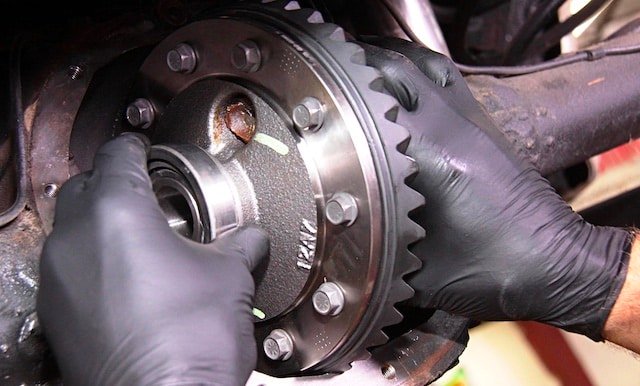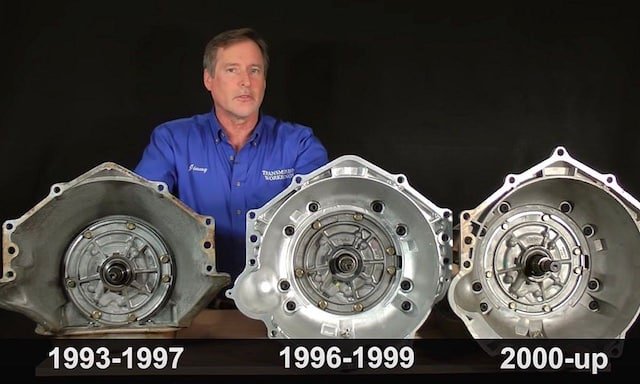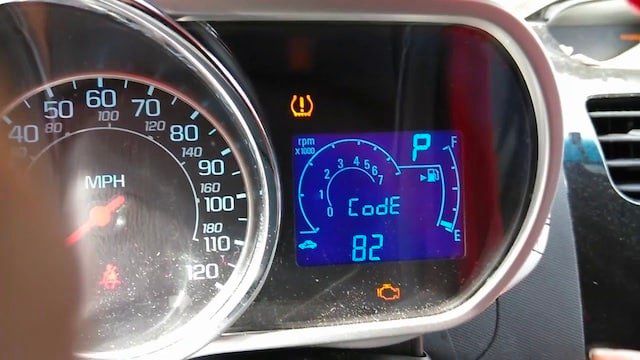When your check engine light is on, the right thing to do is to plug in a scan tool (if you have one) or take it to a repair shop to know what exactly is wrong. If the scan result shows a P0455 code, you may have a gas cap issue to fix.
Although there may be more to this diagnostic error code than just a gas cap issue, the first thing is to check for leaks within the gas cap. To fully understand everything surrounding a Chevy Silverado P0455 code, read this guide until the end.

What Does the P0455 Code Mean?
According to Chevy Silverado’s database, the Diagnostic trouble code (DTC) P0455 simply means “Evaporative Emission Control System (EVAP) Large Leak Detected”. In other words, your car’s computer will only signal this code when a leak is considered significant in the EVAP system.
The code also shows up in car brands like Ford, Jeep, Nissan, and Dodge. This means you should never assume the code stands for the same thing in other cars. Check your repair manual or database to know what the code starts for in your vehicle.
What Causes of the P0455 Code in a Chevy Silverado?
Numerous factors may be responsible for a P0455 code. Let’s take a look at some of the factors usually responsible:
- A missing or broken gas cap. An open gas cap can also result in P0455.
- A spoilt fuel tank filter neck
- A damaged fuel tank
- A broken fuel tank pressure sensor
- A damaged charcoal canister
- EVAP hoses and clamps may be cracked, disconnected, or punctured.
- Both the vent solenoid or purge valve of the EVAP system may be faulty or cannot be closed.
Common Signs To Watch Out For
There are 2 major things to watch out for when your Chevy displays a P0455:
- Check engine light is usually ON
- Your car might give off a fuel smell. This symptom is not too common.
How to Diagnose the P0455 Code
You can diagnose a P0455 code yourself or take it to an auto technician. Whichever options you choose, these are the series of steps that must be taken:
Check the gas cap to ensure it is tightly closed. A loose or faulty gas cap can result in this error code. If the code persists after tightening the gas cap, you may have to replace it with a new gas cap. Gas caps are not expensive and are easy to install.
Note: After tightening or replacing the gas cap, you must clear the code with a scan tool or a code reader because the code won’t disappear immediately.
If the gas cap is not responsible for the P0455 code, you have to investigate further. To do this you have to troubleshoot the entire system and only an auto expert is best for the job.
How to Fix the P0455 Code
To fix a P0455 code, you have to diagnose and find out the component contributing to the problem. After finding out, you either have to repair or replace them.
- If your gas cap is faulty or left open – tighten or get a new one and reset the code. If the P0455 code disappears after a while, it means your gas cap is the culprit.
- If the EVAP system tubes or hoses have cracks or faults – you have to consider replacing them.
- If the charcoal canister has holes in it – the best thing is to get a replacement.
- The fuel tank, fuel tank filter, and Fuel pressure sensors should also be replaced if they are damaged.
Be reminded that all car brands come in different designs, hence, it is advisable to check for what the code means on the repair manual of your car before starting diagnostics.
What Is an EVAP System?
Fuel vapors are dangerous when they mix with the atmosphere. The EVAP system is a collection of different components that prevents fuel vapors from getting into the atmosphere.
This system was first introduced in the 1970s. Then, they were basic and non-enhanced. In 1996, car manufacturing companies began to produce the enhanced versions. These versions were able to detect leaks automatically and send the P0455 code immediately if the leak is getting too much.
A complete EVAP system should include a gas cap, charcoal canister (EVAP), vent valve, fuel tank, and purge valve. The design may vary depending on the car manufacturer.
How Does The EVAP System Work?
The system’s mode of operation involves creating a sealed environment to capture, store and remove lethal fuel vapors from the fuel system. When your car engine is off, fuel vapors are stored in the charcoal canister rather than letting them escape into thin air.
In a running engine, the purge valve of the EVAP system opens to allow vapor to enter the engine for proper combustion. The vent valve is always open to allow fresh air to get into the charcoal canister.
The only time a vent valve is closed is during a self-test. Your engine control module controls both the purge and valves using electronic solenoids. Its major duty is to scan for leaks and related EVAP problems.
EVAP System Tests and the P0455 Code
To verify the status of the EVAP system, the ECM (engine computer) performs fuel vapor leak tests. These tests are often performed when a vehicle is parked/switched off or running.
During a leak test, the ECM sends a signal to close the vent and purge control openings. Once closed, the entire EVAP system is monitored for pressure variations or vacuum deficiencies.
A code will be stored depending on the size of vapor leaks. Significant leaks are recorded as P0455 while minor leaks are recorded as P0456.
Conclusion
Considering the P0455 code as a serious warning is not an understatement. If not addressed quickly, vapor leaks may result in bad fuel economy, emission control system troubles, and may damage related vehicle components.
An evaporative emission control system leak exposes the atmosphere to harmful emissions and dangerous vapors that can wreak havoc on humans too. For those who would love to reset the code themselves, we are saying this to let you know the risk (exposure) involved.
The P0455 code also has subordinate codes such as P0450, P0451, P0452, P0453, P0454, P0456, P0457, P0458, and P0459. Whenever you see any codes, treat them as urgent and report them to a local auto repair.







